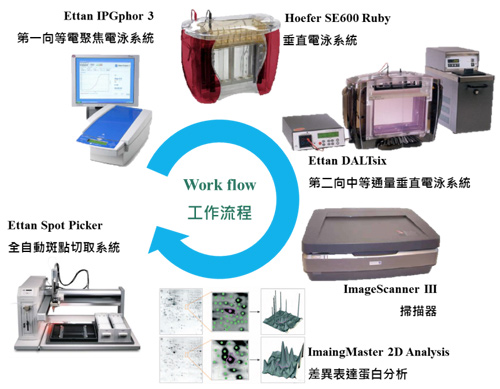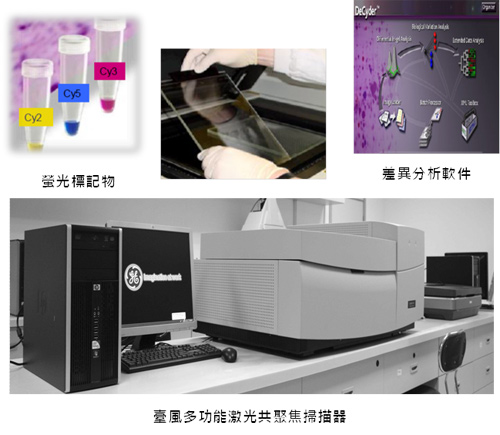Center for Omics Technology and Innovative Drug Research– Technological Platform Proteomics 2D-gel electrophoresis major equipment
2D-gel electrophoresis utilized isoelectrc focusing (IEF) and SDS-PAGE to separate complex protein mixture based on their isoelectric point and molecular weight, and is an important separation strategy in proteomics analysis. It is widely used together with MALDI-TOF MS analysis. The Center’s 2D-gel platform covers sample preparation, 2D-gel electrophoresis, image acquisition and analysis, automated spot-picking, automated trypsin digestion to automated MALDI target spotting. Major characteristics lMature techniques with high resolution and sample loading. lCan be coupled with multiple techniques with maximum flexibility. Applications lProteomic research lIdentification of biomarkers lDiscovery of drug and toxin target, and the study of drug mechanism lStudy of TCM target. lProtein identification, protein-protein interaction, post-translational modification, localization of sub-cellular protein. lInteraction of small molecule and protein interaction. lInnovative drug development |
Center for Omics Technology and Innovative Drug Research– Technological Platform Fluorescence Difference Gel Electrophoresis (DIGE)
Ettan DIGE is a complete system for the quantitative study of differential protein expression.The system includes CyDye DIGE fluorescent label, IPFphor II/Ettan DALT electrophoresis system, Typhoon multi-purpose laser confocal scanner and DeCyder differential analysis software. DIGE platform plays an important role in studying differential protein expression. Major characteristics lCombination of classical 2D-gel electrophoresis and unique multiple fluorescence analysis. lPre-mixing of different sample (with different fluorescent label) prior to electrophoresis, which increases the accuracy, reliability and reproducibility. lSensitive to 10% difference in protein expression with confident interval at 95%. Applications lProteomics research lDiscovery of disease biomarkers lDiscovery of drug and toxin target, and the study of drug mechanism lStudy of TCM target. lProtein identification, protein-protein interaction, post-translational modification, localization of sub-cellular protein. lInteraction of small molecule and protein interaction. lInnovative drug development |









